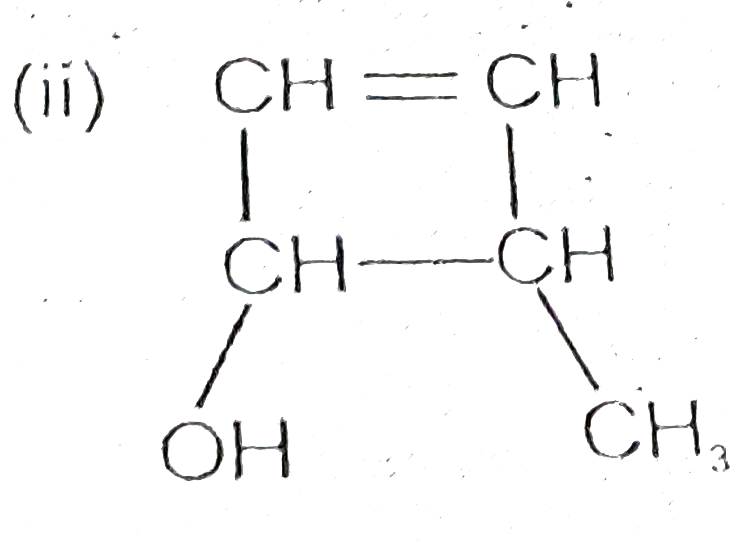CH3CH2I reacts more rapidly with strong base in comparison to CD3CH2I. Explain
To explain why CH₃CH₂I reacts more rapidly with a strong base compared to CD₃CH₂I, we can analyze the differences in bond strengths and the resulting stability of the carbanion formed during the reaction.
1. Identify the Compounds:
- We have two compounds: CH₃CH₂I (ethyl iodide) and CD₃CH₂I (deuterated ethyl iodide).
- The key difference is that in CH₃CH₂I, the hydrogen (H) is present, while in CD₃CH₂I, deuterium (D) is present.
2. Understand the Reaction Mechanism:
- When a strong base reacts with these compounds, it abstracts a proton (H⁺ or D⁺) from the carbon adjacent to the iodine (I) atom, leading to the formation of a carbanion.
- For CH₃CH₂I, the reaction produces CH₃CH₂⁻ (ethyl carbanion) and I⁻.
- For CD₃CH₂I, the reaction produces CD₃CH₂⁻ (deuterated ethyl carbanion) and I⁻.
3. Analyze the C-H and C-D Bonds:
- The bond strength of C-H bonds is generally weaker than that of C-D bonds. This is due to the fact that C-D bonds are stronger because of the greater mass of deuterium compared to hydrogen.
- The bond dissociation energy (BDE) for C-H is lower than that for C-D, making it easier to break the C-H bond than the C-D bond.
4. Compare the Stability of Carbanions:
- The formation of the carbanion CH₃CH₂⁻ is favored because it is easier to break the C-H bond than the C-D bond.
- Since CH₃CH₂⁻ is formed more readily, CH₃CH₂I will react more rapidly with a strong base compared to CD₃CH₂I, which forms CD₃CH₂⁻ less readily due to the stronger C-D bond.
5. Conclusion:
- Therefore, CH₃CH₂I reacts more rapidly with a strong base than CD₃CH₂I because the C-H bond is weaker and more easily broken than the C-D bond, leading to a faster formation of the corresponding carbanion.
- We have two compounds: CH₃CH₂I (ethyl iodide) and CD₃CH₂I (deuterated ethyl iodide).
- The key difference is that in CH₃CH₂I, the hydrogen (H) is present, while in CD₃CH₂I, deuterium (D) is present.
- When a strong base reacts with these compounds, it abstracts a proton (H⁺ or D⁺) from the carbon adjacent to the iodine (I) atom, leading to the formation of a carbanion.
- For CH₃CH₂I, the reaction produces CH₃CH₂⁻ (ethyl carbanion) and I⁻.
- For CD₃CH₂I, the reaction produces CD₃CH₂⁻ (deuterated ethyl carbanion) and I⁻.
- The bond strength of C-H bonds is generally weaker than that of C-D bonds. This is due to the fact that C-D bonds are stronger because of the greater mass of deuterium compared to hydrogen.
- The bond dissociation energy (BDE) for C-H is lower than that for C-D, making it easier to break the C-H bond than the C-D bond.
- The formation of the carbanion CH₃CH₂⁻ is favored because it is easier to break the C-H bond than the C-D bond.
- Since CH₃CH₂⁻ is formed more readily, CH₃CH₂I will react more rapidly with a strong base compared to CD₃CH₂I, which forms CD₃CH₂⁻ less readily due to the stronger C-D bond.
- Therefore, CH₃CH₂I reacts more rapidly with a strong base than CD₃CH₂I because the C-H bond is weaker and more easily broken than the C-D bond, leading to a faster formation of the corresponding carbanion.
Similar Questions
Knowledge Check
Given below are the structures of few compounds with molecular formula C4H10O. Select metamers from these structures.
(i) CH3−O−CH2CH2CH3
(ii) CH3CH2CH2CH2OH
(iii) CH3−CH2−O−CH2−CH3
(iv) CH3−C∣OHH−CH2−CH3A(i) and (ii)B(ii) and (iii)C(i) and (iii)D(ii) and (iv)
CH3−CH=CH2CI−I−−−→P,Pis
View SolutionWhich alkyl halide from the following pairs would you expect to react more rapidly by an SN2 mechanism? Explain your answer.
(i)CH3CH2CH2CH2BrorCH3CH2C∣BrHCH3,(ii)CH3CH2C∣BrHCH3orH3C−CH3∣C∣CH3−Br
(iii)CH3C∣CH3HCH2CH2BrorCH3CH2C∣CH3HCH2Br
View SolutionWrite its bond line formula
(i) CH3CH(OH)CH2CH2OH
View SolutionExplain why (CH3)3+Cis more stable than CH3+CH2 and CH3 is the least stable cation
View SolutionWhich of the products will be major product in the reaction given below? Explain
CH3CH=CH2+Hi→CH3CH2I(A)+CH3CHICH3(B)
View SolutionA: CH3−CH−CH3 has 6. hyperconjugative hydrogens while CH3−CH−CH2−CH3 has 5 hyperconjugative hydrogens.
R: CH3−CH−CH3 is more stable than CH3−CH−CH2−CH3
View SolutionThe correct order of SN2/E2 ratio for the % yield of product of the following halide is,
P.CH3−CH2−Ph∣C∣I−CH3
Q. CH3−CH∣Ph−CH∣I−CH3
R. CH3−CH2−I
S. CH3−CH−CH∣I−CH3
View Solution
